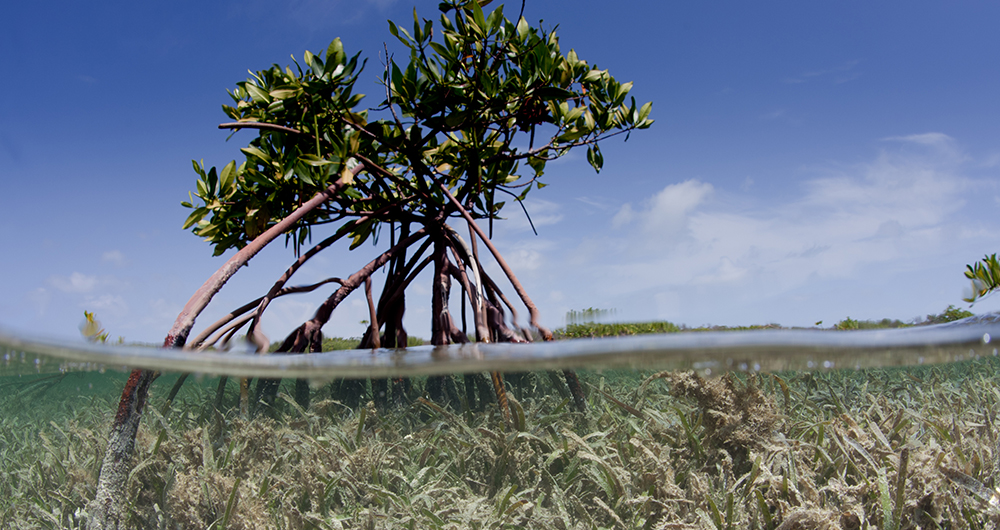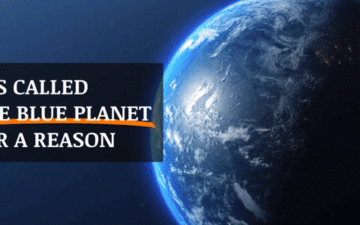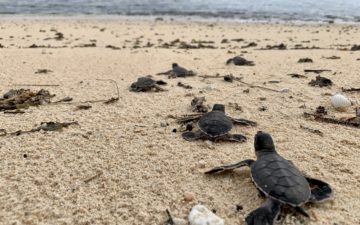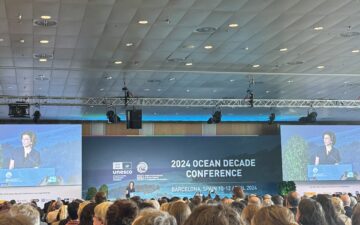Seventeen named storms struck the greater Caribbean region in 2017—wreaking havoc on human communities and natural resources alike. So many families lost loved ones, their livelihoods, and their homes—it is hard to measure the magnitude of the emotional effects even as we strive to address what we can measure. At the one year mark of the recovery from Hurricane Maria’s devastating impact on St. Croix, Puerto Rico, and other American islands, we know that it may be decades before the human communities and natural resources fully recover. At the same time, we also know that seagrass meadows and mangroves played a key role in limiting the worst of hurricane and other storm damage. Restoring those resources is an investment in recovery and in future resilience.
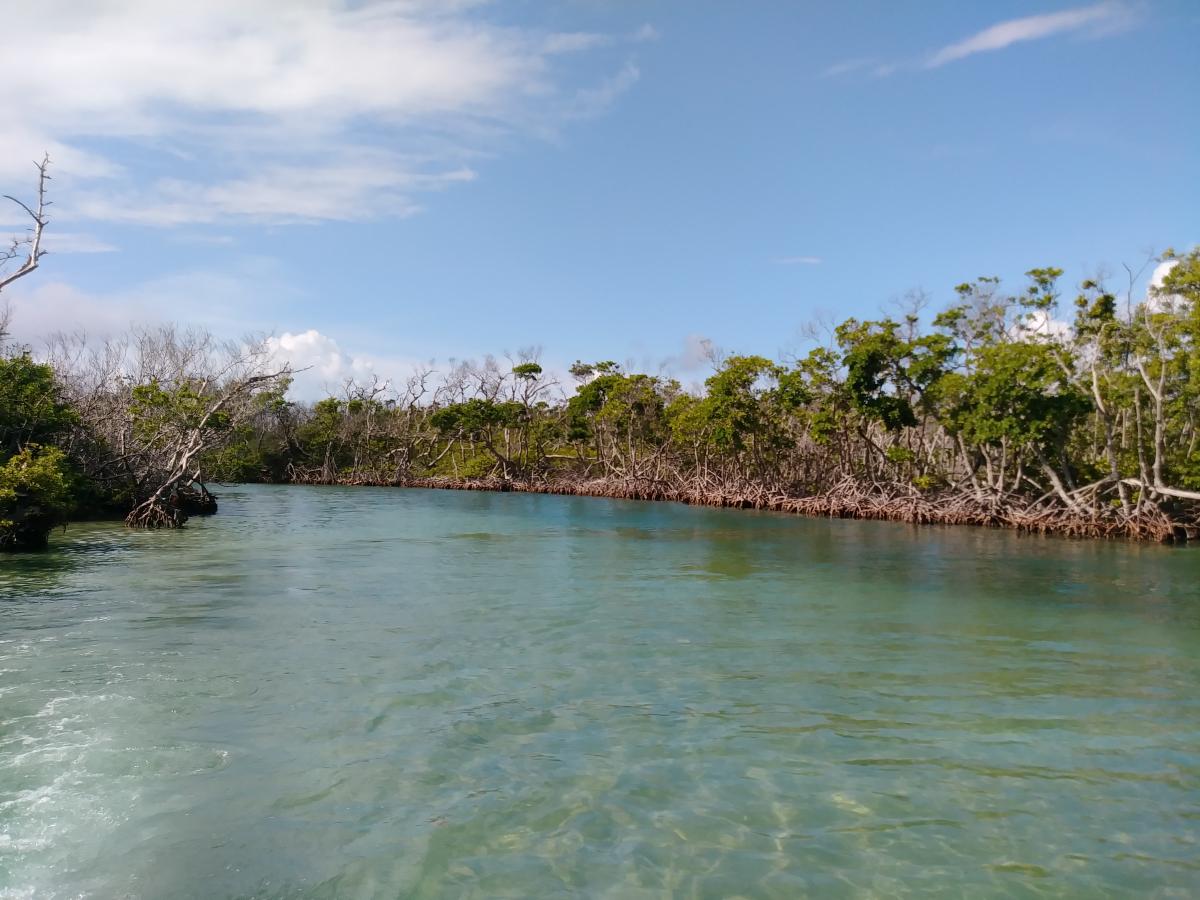
Jobos Bay National Estuarine Research Reserve, Puerto Rico, Credit: Raimundo Espinoza Chirinos
As part of our contribution to Puerto Rico’s recovery, we are working with our local partners, Protectores de Cuencas, a non-profit organization with the mission of restoring and protecting Puerto Rico’s watersheds, and Conservación ConCiencia, a project of The Ocean Foundation, to conduct the planting of an estimated 25 acres of seagrass meadow in the Jobos Bay National Estuarine Research Reserve, a federally protected estuary located in Aguirre, on the southern coast. Situated between the municipalities of Salinas and Guayama, the 2800-acre (1140-hectare) reserve is an intertidal tropical ecosystem dominated by seagrass beds, coral reefs, and mangroves. The reserve provides sanctuary to the brown pelican, peregrine falcon, hawksbill sea turtle, multiple shark species, the West Indian manatee, and other endangered species. The reserve is bordered by several communities, important evacuation routes, and the Aguirre Power Plant Complex, an oil-fired plant and largest power generator in Puerto Rico. In 2017, Hurricanes Irma and Maria dealt a devastating blow to this region resulting in many casualties, complete loss of power, and other damaging effects.
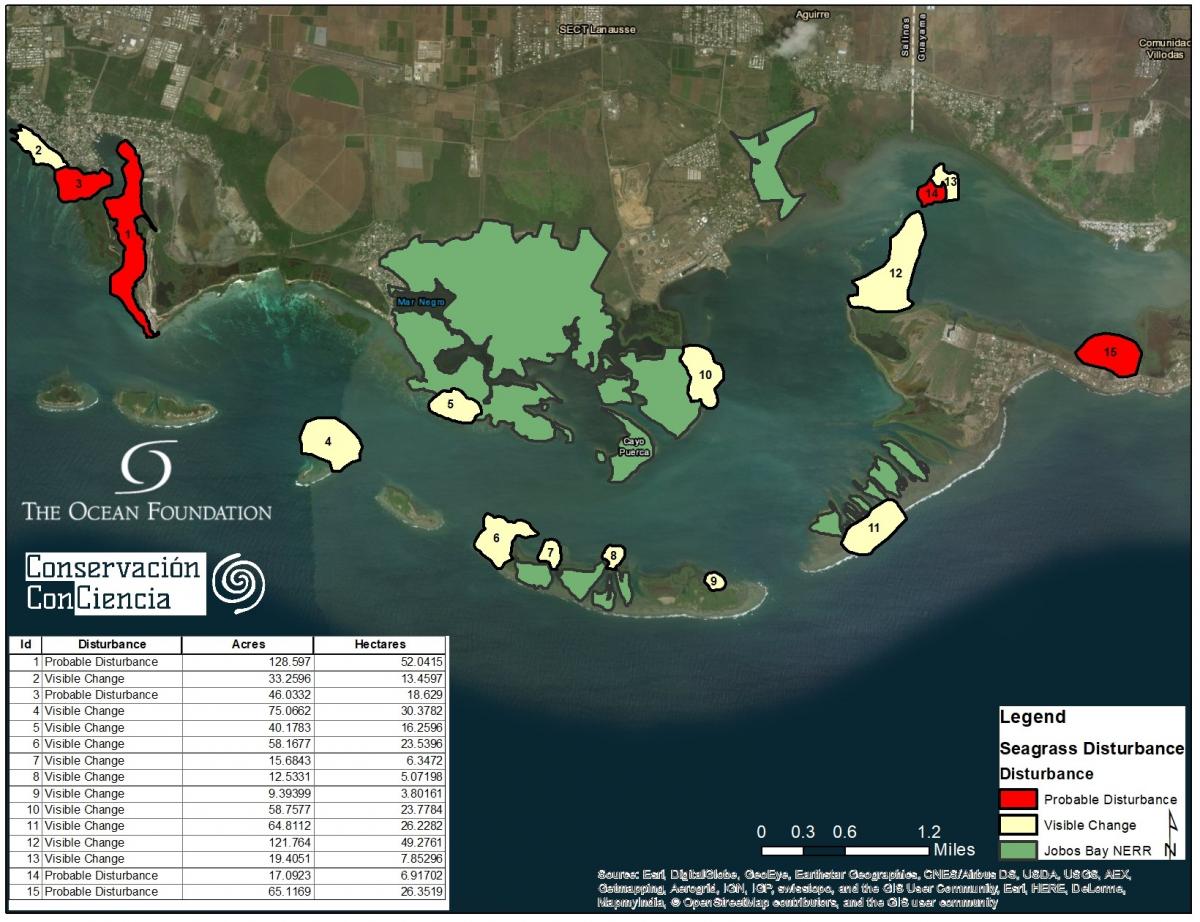
Jobos Bay National Estuarine Research Reserve, Puerto Rico, Credit: NOAA, FEMA
In July 2018, NOAA released a report that the seagrass meadows of Jobos Bay had been harmed by the hurricanes and needed to be restored as a key component of the region’s natural infrastructure and resilience. The goal of this project is to develop and implement a restoration and growth expansion plan for seagrass meadows in Jobos Bay. By regenerating damaged seagrass beds, we aim to offset carbon emissions as well as to restore and improve the reserve’s overall health to promote natural resilience in the region.
We also expect that the project will offer economic benefits to divers, fishers, and other community benefits. Conservación ConCiencia’s Executive Director, Raimundo Espinoza Chirinos, has been working with local fishermen to remove lost fishing gear and other debris in the wake of the storms. These same divers and fishers will be recruited to conduct seagrass planting activities, which will bring much-needed income back to some of the hardest-hit communities still struggling to recover from both the financial loss and emotional trauma inflicted by Hurricanes Irma and Maria.
After Hurricane Maria, Building a Community Under the Sea featuring TOF Project, Conservación ConCiencia, Credit: Great Big Story
We are now in the permitting approval process. Once it is complete, the actual restoration process will be planned in cooperation with local management authorities and restoration experts. Our goal is to celebrate the new planting on World Oceans Day 2019.
The Ocean Foundation is working with a network of generous donors to support this important recovery effort. Much of the funding comes from our SeaGrass Grow program, a unique approach that enables individuals, nonprofits, and businesses to use our Blue Carbon Calculator to assess and offset their carbon footprint by supporting the restoration and conservation of seagrass meadows around the world. Major supporters for this project include JetBlue Airways, the Ocean Conservancy, WSL Pure, Vestas Wind, Bluewater, and Confluence Philanthropy. We are currently in discussion with other donors that care deeply about Puerto Rico’s recovery to expand the scope of the project in the future.
By the time the second anniversary of Irma and Maria rolls around, we hope that all of Puerto Rico’s abundant natural resources are well on the path to recovery. We hope that we will see recovery of the mangroves that support Mosquito Bay’s famed bioluminescence and the same for El Yunque’s tropical forests. We hope the Puerto Rico’s human communities come back more resilient.
If you’d like to contribute to our seagrass and mangrove planting project in Puerto Rico, please visit the Defend Puerto Rico’s Coasts page to find out more.
